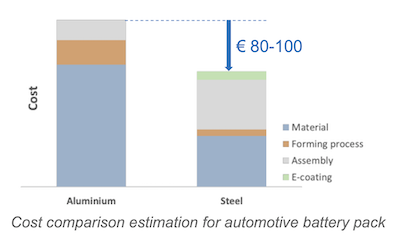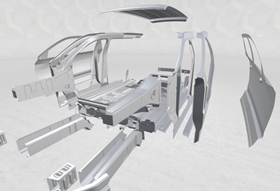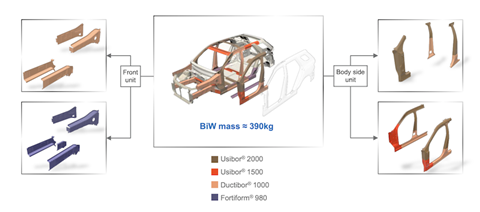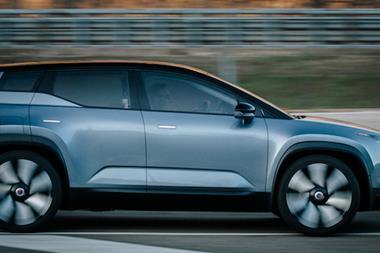As the automotive manufacturing industry adapts during fast-changing times, steel has a major role to play

OEMs and suppliers have to adapt to a fast-changing world driven by environmental targets. As a consequence, there has been rapid development of electrified vehicles and battery electric vehicles (BEV). However, the situation is stressful and challenging with new mobility services in demand from customers and new players in the market.

The profitability of BEVs is still not at the level of conventional ICE vehicles and we don’t know when the tipping point for BEV success will arrive. What’s more, this year has brought further uncertainty thanks to the Covid-19 crisis and the global economic struggles that we all now face.
Nevertheless, there is a significant cost gap between EV and ICE vehicles. A recent study from McKinsey and Company estimates that gap, on average, at $12,000 per vehicle. So the strong need to reduce the costs of BEV manufacturing persists.

As the automotive manufacturing industry prepares to adapt in these fast-changing times, steel is part of the answer.
Steel is known to be an affordable solution, it’s an assertion that was demonstrated ArcelorMittal’s battery pack study. For example, in life-cycle assessment analysis, the study shows that steel compares favourably against alternative materials. There are further advantages when it comes to crash performance thanks to the newest generation of advanced high strength steels (AHSS) and press hardenable steels (PHS).

Steel is also very cost effective, for example, in a key BEV application such as the battery pack. A company specialising in cost assessment in the automotive industry found that a battery pack made of steel can be €80-100 cheaper compared to an aluminium solution..
ArcelorMittal’s range of advanced high strength steels (AHSS) can be deployed to meet the lightweighting, safety, sustainability, cost, and performance targets of BEV producers. Our S-in motion BEV study shows how these smart steels and steel solutions can be applied to three key parts of BEVs: the battery pack, the body-in-white (BIW), and chassis components.
“The S-in motion BEV study demonstrated that we can limit the mass penalty of battery electric vehicles which results from the more challenging crash management compared to fuel-powered vehicles. Using best-in-class solutions to put the right steel in the right place, we have optimised the mass performance of the BEV,” highlights Elie Gibeau, the project manager in charge of BEV solutions at ArcelorMittal Global R&D.
“All solutions have passed extensive assessments including global crash test models and simulations of forming feasibility and assembly.”
Smart steel

The S-in motion BEV study also examined how AHSS could be deployed to accommodate the battery pack and powertrain in a typical SUV body-in-white structure. These solutions make extensive use of Usibor 2000 and Ductibor 1000 which are designed for hot stamping and allow very complex geometries with a best-in-class precision.
Roll formed MartINsite steel grades are also utilised, particularly in applications which must withstand severe crash energy and where the roll-forming process could make the solution even more cost-effective.
Parts studied included the front and rear bumper systems, the roof panel, the inner and outer parts of the side unit, and the front, central, and rear units.
Smart steel remains the material of choice for solutions that will help to shape e-mobility age. ArcelorMittal has a worldwide catalogue of AHSS and PHS grades that allow car manufacturers to design safe battery electric vehicle structures in a cost-efficient way.

A catalogue of steel solutions, selecting carefully the right grade at the right place, is available and can form the basis for discussion with OEMs in a context specific to need.
Tailor-welded blanks are an innovation solution to further advance the limit of weight saving at an affordable cost and help improve sustainability. This technology is available with the latest grades of PHS.
ArcelorMittal has a series of generic projects related to electrification – PHEV, battery pack, chassis – which are also available for discussion. The project teams are ready to bring the deep knowledge and adapt the innovations and solutions to any context required by OEM and tier one suppliers.





































No comments yet